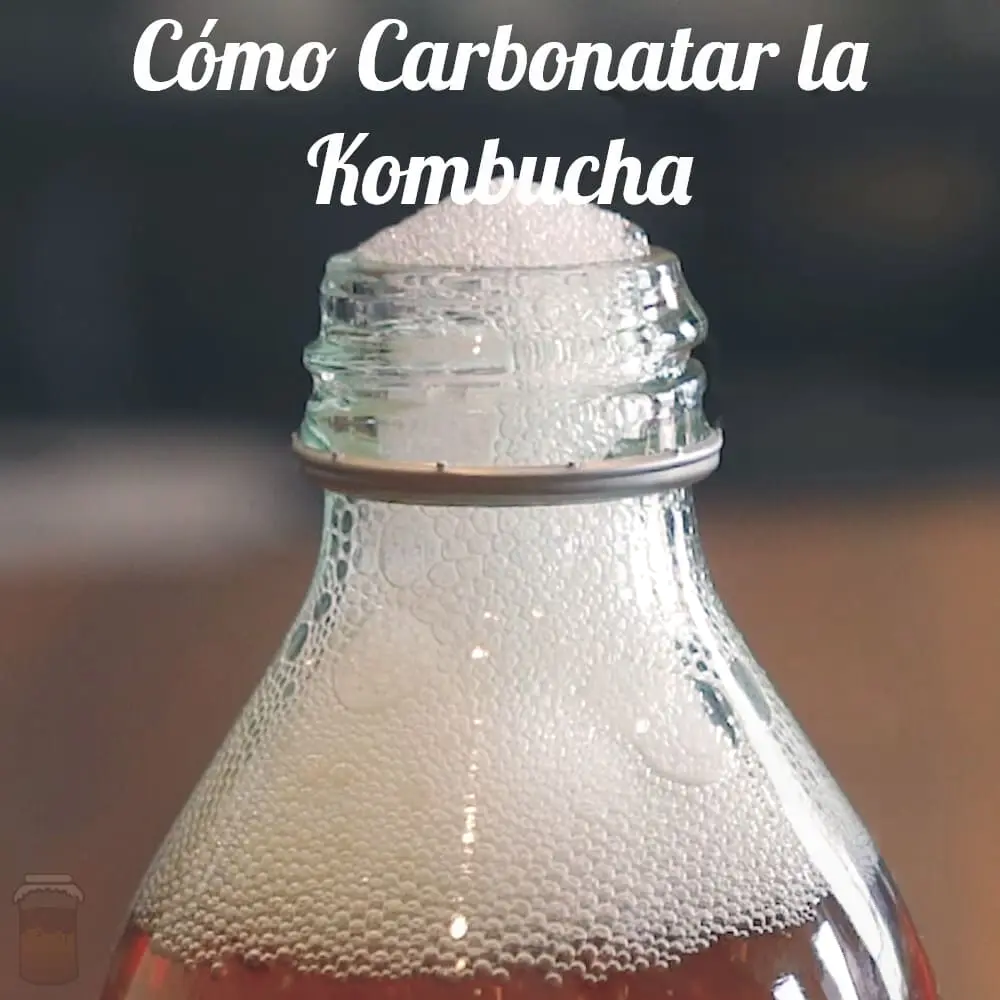To carbonate drinks and not fail in the attempt, several aspects must be taken into account so as not to affect the quality of the product, the methods must adhere to the type of drink or fermentation that you want to try. If we think of kombucha, then how could we make it gaseous without impairing its integrity?
The fermentation of kombucha can carbonate the drink a little, but the levels of CO2 produced are not enough to turn it into a carbonated drink, certain steps must be followed that involve a second fermentation to achieve bubbles with a soft and pleasant burning sensation.
The preparation is not as difficult as you might think, but you must be careful because producing a lot of gas can be dangerous, generating an irritating drink for the palate or very alcoholic or acidic if you neglect the amount of sugar, or the presence or not of oxygen.
If you follow the corresponding instructions, you can enjoy their delicious fizzy kombucha!
So how to carbonate kombucha?
The fermentation process of kombucha given by yeasts leads to the formation of carbon dioxide (CO2), this component dissolves in the liquid similar to the secondary fermentation of wine and beer.
Kombucha has a natural carbonation, which can be done a second time without oxygen (anaerobic fermentation) to gasify the product.
The kombucha drink contains acid-tolerant yeasts such as Zygosaccharomyces, Pichia Brettanomyces, Saccharomyces, Saccharomycodes and Candida, which consume the sugar in the drink producing CO2 and ethanol. The sensory characteristics, bubble formation, foam and stability of carbonated beverages are due to this CO2 and some proteins or sugars present in the drink. [1] [2]
The level of carbonation of the beverage depends on the solubility of CO2, which is influenced by CO2 pressure and temperature, obtaining greater solubility at lower temperatures along with a given pressure, it can also be affected by sugar and ethanol concentrations. [1] [3]
What should you do to gasify your kombucha?
You can start preparing your kombucha in the usual way and ferment at room temperature, in this first fermentation the formation of acids occurs in the presence of oxygen (aerobic fermentation), and when it acquires the desired characteristics, you can bottle your kombucha.
Here begins the second anaerobic fermentation that gasifies your kombucha and for this the following should be considered:
- Before bottling add some of the culture at the bottom of the bottle, then pour the kombucha leaving only 1 cm of space between it and the nozzle of the bottle, this is done to minimize oxygen and avoid aerobic fermentation that could turn your drink more sour by the formation of acids, also leaving a minimum of air to avoid explosions by the gases formed. [3] [4] [5]
- It should be stored in a cool place at low temperatures. You can keep it refrigerated 4ºc to avoid risks of explosions and improve the organoleptic characteristics of the drink.
- You do not need to add more sugar to the kombucha during fermentation, it already contains enough and if you do it can excessively increase the pressure inside the bottle and can generate explosions. [6] [7]
- The level of carbonation is related to the amount of sugar added, but only before the first fermentation, it is not safe to add it afterwards because of the risk of excessively increasing CO2 and alcohol levels. I recommend you read the post about the sugar content of kombucha.
- For anaerobic fermentation it should be stored in sealable bottles while the kombucha is still a little sweet.
- It should be fermented in the bottles for a few days, a time similar to that of the first fermentation, the addition of sweeteners or fruits can be recommended to speed up the process and increase the gas and flavoring, but there is a risk of excessive carbonation. [4]
What is the ideal container to carbonate your kombucha?
They are recommended between glass or plastic containers, although the latter are usually controversial for the preparation of carbonated beverages, only PET plastic bottles designed for carbonated beverages are used in those cases. [5] [7]
In my personal experience, I have only used glass bottles, so I do not have much experience with PET, but in the same way, we will detail the types of bottles you could use:
Bottles of wine or lever: They can also be soft drinks or beer. These are very effective as they are made to withstand high pressure. You can reuse those that were already used, but now they will have less capacity to withstand the pressure so you must be careful not to carbonate too much.
Folding cap bottles: Also known as mechanical caps, they are safer to avoid explosions, although they are not as economical. It can be reused for several years.
Champagne bottles: excellent to withstand pressure as long as the conditions of the bottle, wire and cork are in good condition.
Glass bottles with screw cap: thick glass and plastic screw cap work well for internal pressure. [5]
Also PET plastic bottles have rotating caps, so if you think you’re building up a lot of pressure you can loosen and release the gas when needed.
It is considered that they have many advantages over glass containers, but the problem is that they pose imperfect barriers for gaseous fluids as they are semipermeable, resulting in CO2 losses, being greater in smaller bottles of 1/2 L.
These withstand great pressure and do not result in serious damage to property or health in cases of explosions. [7] [8]
Can making carbonated kombucha bring health problems?
When carbonated beverages are made, 0.6 volumes of CO2 minimum must be obtained, any value lower than this is perceived very basic and is not considered carbonated, but volumes of CO2 greater than 8 can generate injuries not only by consumption but also by explosions of the bottles by not withstanding the internal pressure. [6]
Beverages with high amounts of CO2 can cause burns on the tongue and throat, in addition to visible injuries in the mouth, also if the drink has retained a small amount of oxygen during filling it can oxidize damaging the final product, seriously affecting the taste or completely destroying the drink being unfit for human consumption. [6] [9]
Drinks can also explode without any provocation, many accidents have occurred either on the property or to the person, causing mainly eye injuries, being advisable to move the cap away from the face when handling the bottles.
If you are going to gasify your kombucha you should prevent damage to your health and home, the drink should not be subjected to heat or shaken, you should choose the right bottles or protect them with plastic sleeves or use unbreakable plastic bottles that lessen the severity of explosions. [10]
In my personal opinion, after 6 days I start tasting kombucha after the second fermentation, so from then on, I always release some of the CO2 that can accumulate in anaerobic fermentation every time I serve it, and if you are worried that it accumulates a lot, you can release some gas by opening the bottle.
With this we say goodbye to the article, but do not forget that you can continue to inform yourself, not only about how to carbonate kombucha, but other very similar content that will surely serve you.

